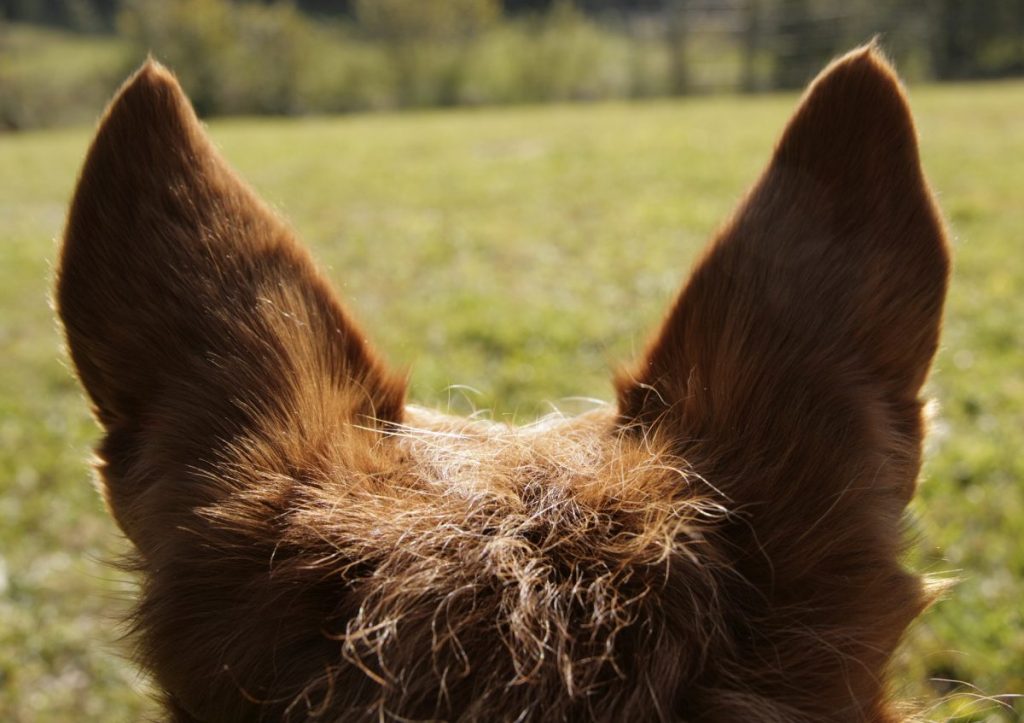Dogs are known for their keen senses, especially their great hearing. Unfortunately, hearing loss in dogs, whether partial or complete, is relatively common. This is why it is important to familiarize yourself with common signs that might indicate that your dog is losing his hearing and some ways to cope with this transition.
Signs of Hearing Loss in Dogs
Before looking for signs of hearing loss, you should understand the differences between partial hearing loss and complete hearing loss.
- Partial hearing loss occurs when a dog can still hear, either partially through both ears or completely through one and not through the other. Partial hearing loss can be caused by a number of factors, including blockage in the ear or injury to the ear. Certain breeds, such as Labradors and Spaniels, face a higher risk of blockage in their ears because they fold down and can’t be cleaned as easily.
- Complete hearing loss occurs when a dog can’t hear at all, and is typically caused by genetics or old age. Understandably, complete hearing loss is a more serious situation than partial hearing loss.
Hearing loss, or deafness, in dogs can be congenital or acquired throughout their lifetime. Congenital hearing loss occurs when a dog is born with a condition that makes them lose their hearing, usually birth defects or genetic inheritance.
Acquired hearing loss occurs when a dog is born with normal hearing and something happens that causes them to lose their hearing, including aging, trauma, or infection. Some signs that your dog may be losing their hearing include:
- Little to no response to clapping or calling their name
- Little to no response to squeaky toys or other disturbances, such as kids or the doorbell
- No response to other dogs barking
- Being more startled than normal when woken up and being more difficult to wake
- Increased barking
If you believe your dog is starting to lose his hearing, contact your vet immediately. They will conduct an examination to find out if the hearing loss is partial, complete, congenital, acquired, or permanent.
Treating Hearing Loss in Dogs
Depending on the type of hearing loss determined, there are a variety of actions you and your vet can take to make your pup more comfortable.
Permanent Hearing Loss
Unfortunately, permanent hearing loss is hard to treat and may be a lifetime condition that you and your dog need to learn to cope with. Surgery may be attempted, depending on the situation.
Partial Hearing Loss
For dogs experiencing partial hearing loss, a vet may try to remove a foreign object from the ear, such as wax or dirt, or may treat an ear infection if present. If the condition isn’t too serious, your dog may fully recover in weeks or months.
How to Cope with a Deaf Dog
It may be hard to adjust to life with a deaf or partially deaf dog, but by understanding your dog’s condition, you can take steps to make life a little easier for both of you. This includes:
- Monitoring your dog closely, especially in the time directly following a surgery, to prevent further injury. Make sure your dog is closely monitored both indoors and outdoors and limit exposure to other dogs after surgery or while on medications.
- Creating a safe living space for a dog with hearing loss by keeping them away from traffic, making sure that no one sneaks up on them, and teaching them physical, not verbal, cues.
- Put updated tags on your dog and microchip them if they aren’t already. Because deaf dogs have a harder time responding to your calls, make sure they are adequately labeled in case they run away. You may also want to label your dog as deaf on their tags so if found by a stranger, they will know your dog’s unique situation.
Just like other disabilities, dogs who are experiencing partial or complete hearing loss require a high level of care and consideration. As a responsible dog owner, you should look for signs of hearing loss early on, consult your vet right away, and depending on the diagnosis, take steps to help your pup.
Following diagnosis, you should make sure your dog has a safe and comfortable living environment, has updated dog tags, and that everyone in your household is educated on how to care for your furry friend.






